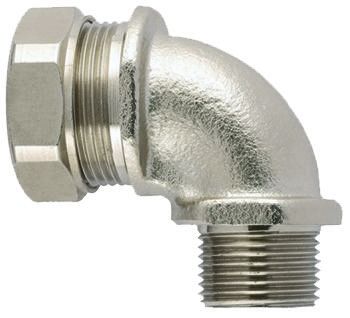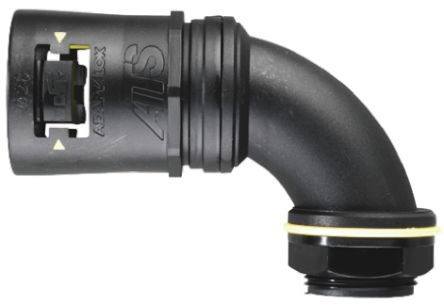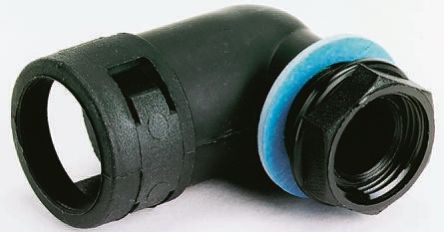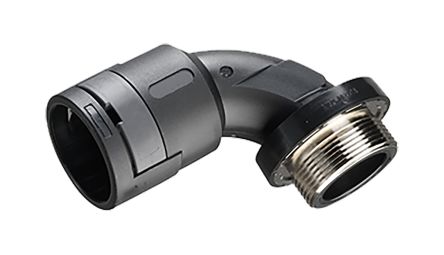- Automation & Control Gear
- Cables & Wires
- Enclosures & Server Racks
- Fuses & Circuit Breakers
- HVAC, Fans & Thermal Management
- Lighting
- Relays & Signal Conditioning
- Switches
- Batteries & Chargers
- Connectors
- Displays & Optoelectronics
- ESD Control, Cleanroom & PCB Prototyping
- Passive Components
- Power Supplies & Transformers
- Raspberry Pi, Arduino, ROCK, STEM Education & Development Tools
- Semiconductors
Conduit Elbows
PVC Conduit fittings come in various shapes, sizes, and materials. They're typically used to join conduit runs together and to connect the ends of conduit to boxes, enclosures, or electrical equipment. To connect conduits to enclosures or boxes of various sizes and when the direction of the majority of metallic conduits needs to be changed, fittings are required. Additionally, some straps and clamps are utilized to fasten and add to the support of conduits. Special fittings can be required if a conduit line is exposed to dampness, fumes, or dangerous circumstances
What is Electrical Conduit Fittings
Small devices, known as conduit fittings, are used to join cable conduits and to link them to other objects, such as electrical boxes, enclosures, or electrical gadgets. Electrical wire and wiring are protected and routed using tubes called cable conduits and cable conduit systems. There are many conduit fittings, ranging from adaptors and couplings to locknuts and grommets..
Features
Brass, galvanized steel, nylon, rubber, PVC, and other robust, long-lasting materials make conduit fittings. They are perfect for running cables and wire through underground walls or for cable protection when cables are run in the open since they are durable and long-lasting.
Steel Conduit fittings are employed in all residential and commercial buildings, particularly for exposed wiring and cable installed outdoors. To provide additional cable protection, particularly for the electrical cable inside of a conduit, it's crucial to choose a suitable fitting. When choosing a fitting and a conduit to provide security for your entire conduit system, it's crucial to consider an IP rating recognized in the industry, such as IP65.
There are different types of conduit fittings used for various applications.
Types of Conduit Fittings
Depending on the size of your cable conduit, a variety of mm sizes are available for conduit fittings. Additionally, you can choose from a range of fitting kinds, such as:
Curved and elbow connectors are used for handling variations in a conduit's direction. They come in many different lengths and curves. Some tubings can be bent manually, mechanically, or, for larger ones, hydraulically. Nevertheless, bending conduits on-site could harm them or lower their internal diameter if an installation calls for several bends.
Straight connectors are used for safely connecting conduit lengths. They are also known as conduit bodies. These are tubular units with openings for conduit admission and wire access at each end. There are several designs, and you can discover conduit bodies that unite two conduits in a straight line, bend them at an angle of 90 degrees, or combine two conduits of various types or sizes. Even the cable access point can be covered with screws or left exposed.
Bushings are put within the boxes and threaded into the end of the conduit. Bushings prevent the conductors from being harmed during wire pulls by creating a smooth entry point to conduits without sharp edges. They become even more crucial when the conduit system enters an enclosure or bus box.
Adaptors are used for attaching and securing cables, conduits, and wires.
Many cable conduit fittings available are threaded couplers, gaskets, flanges, clamps, locknuts, spacers, and inspection fittings. Conduit couplings are necessary for practically every coupling system to connect conduit lengths and join bends constructed on-site firmly. There are many sizes of couplings, and some, like stiff conduit couplings, have internal threads.




